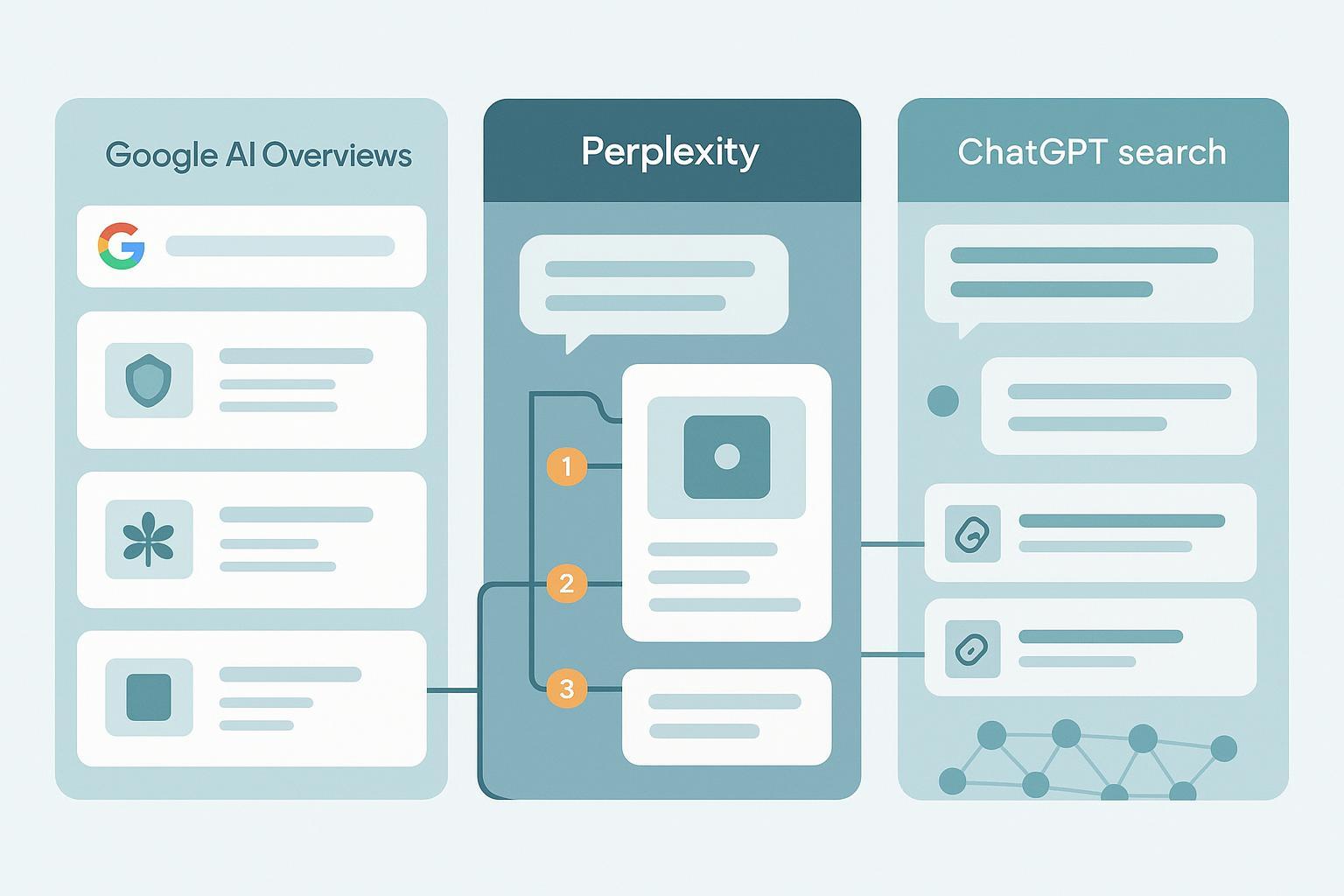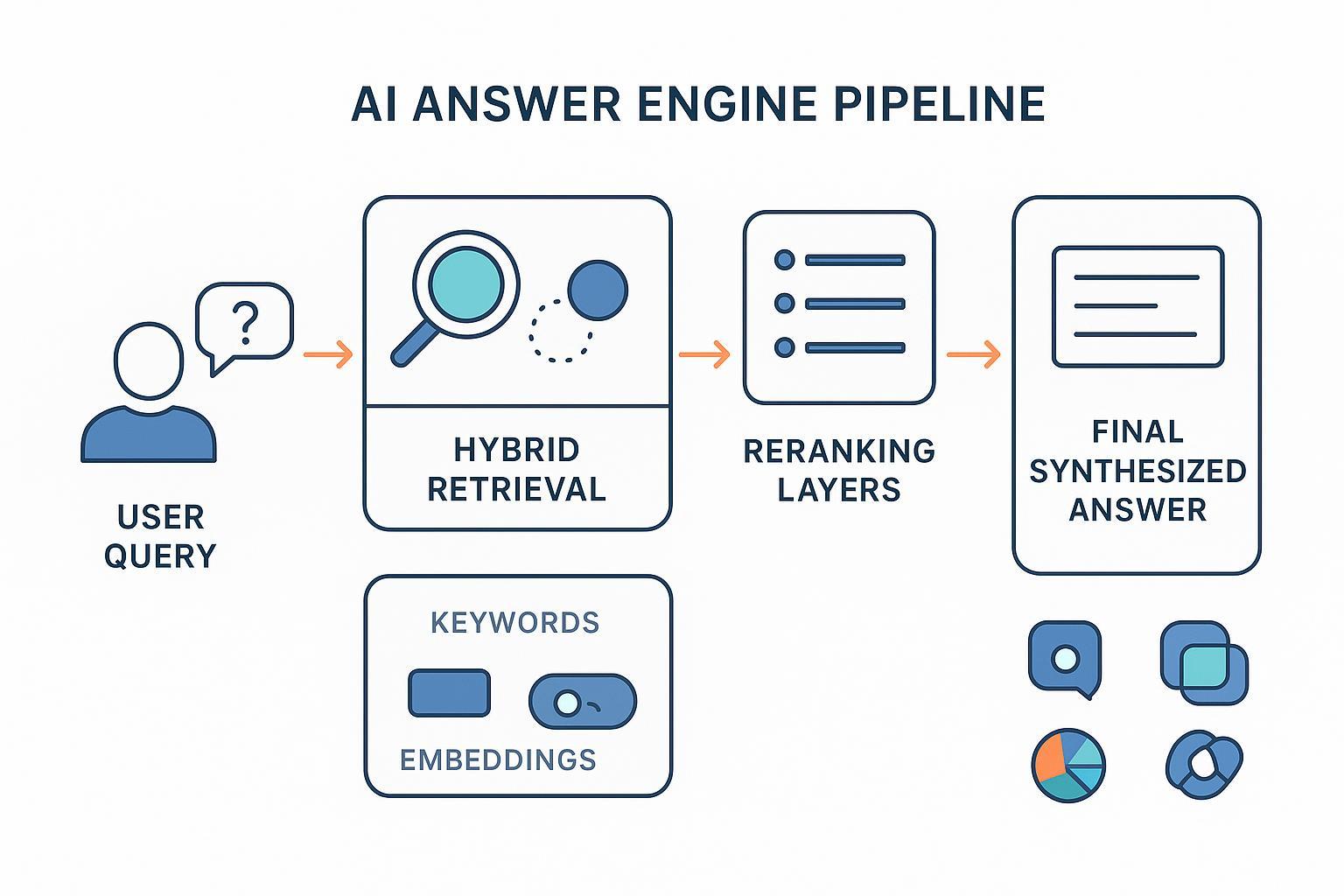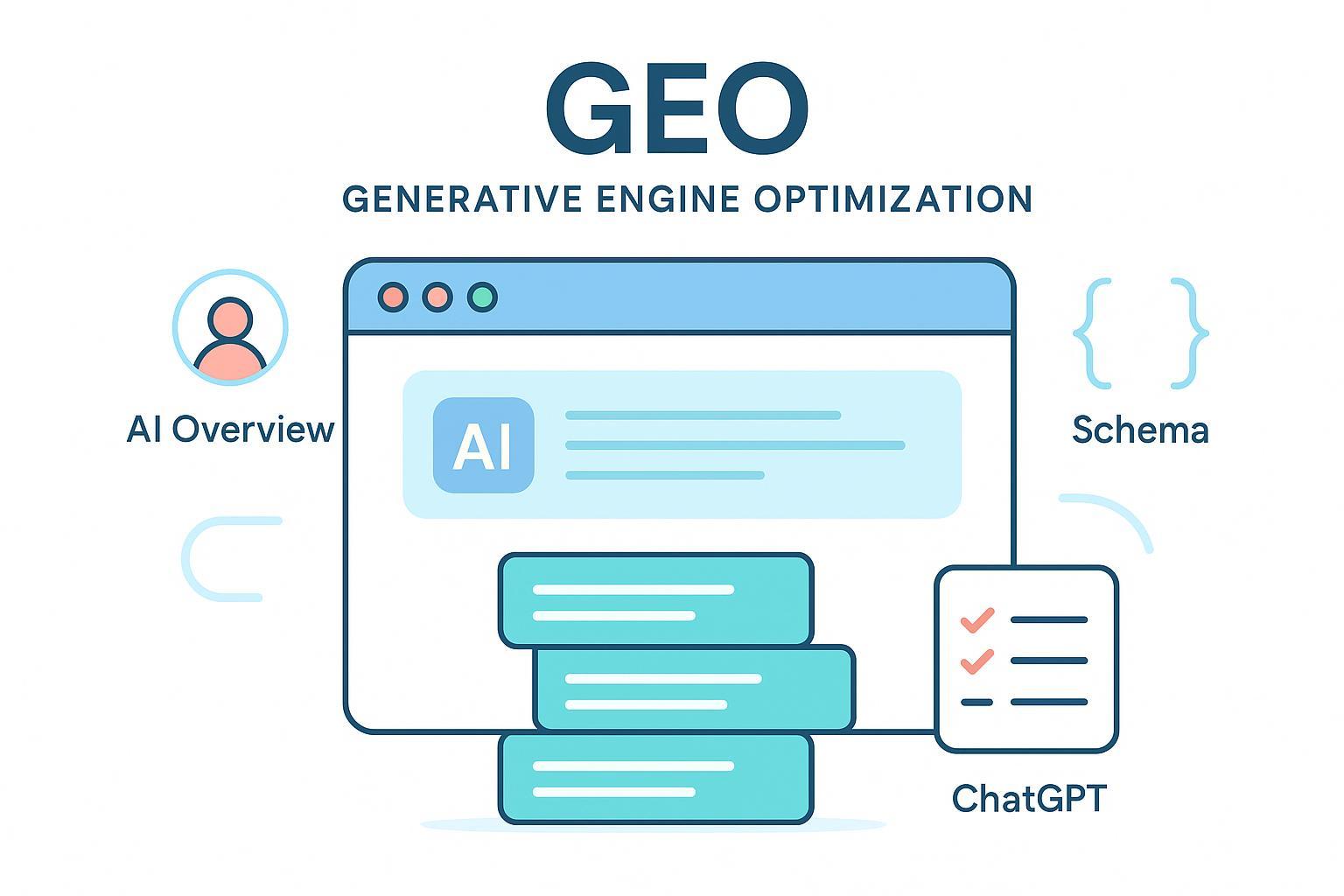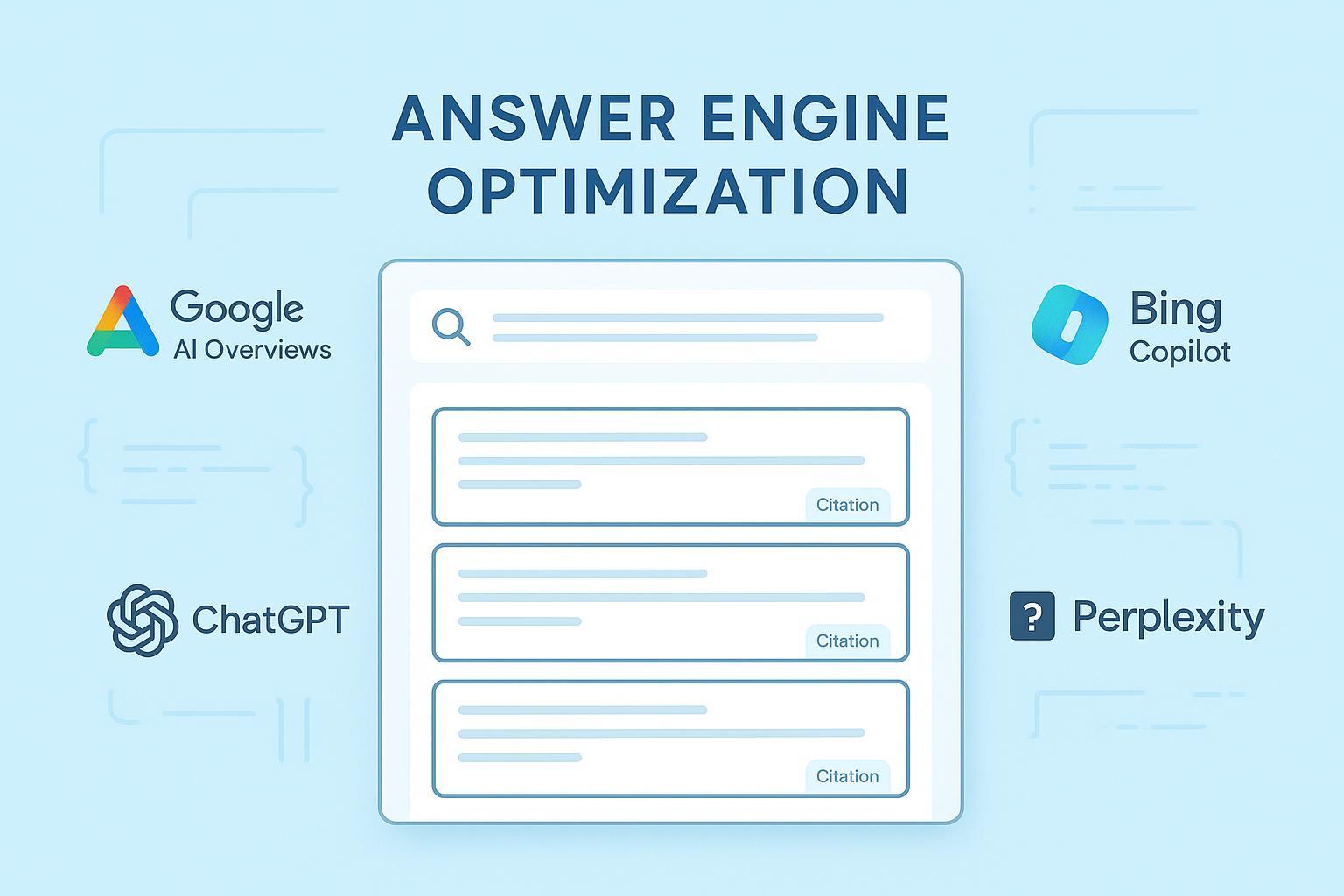12 Best Multimodal AI Content Creation Tools for Marketing (2025)
Explore 12 top multimodal AI tools for marketing in 2025. Find the right platform for text, image, video, and audio—compare features, pros, pricing, and tips. Start building your stack.

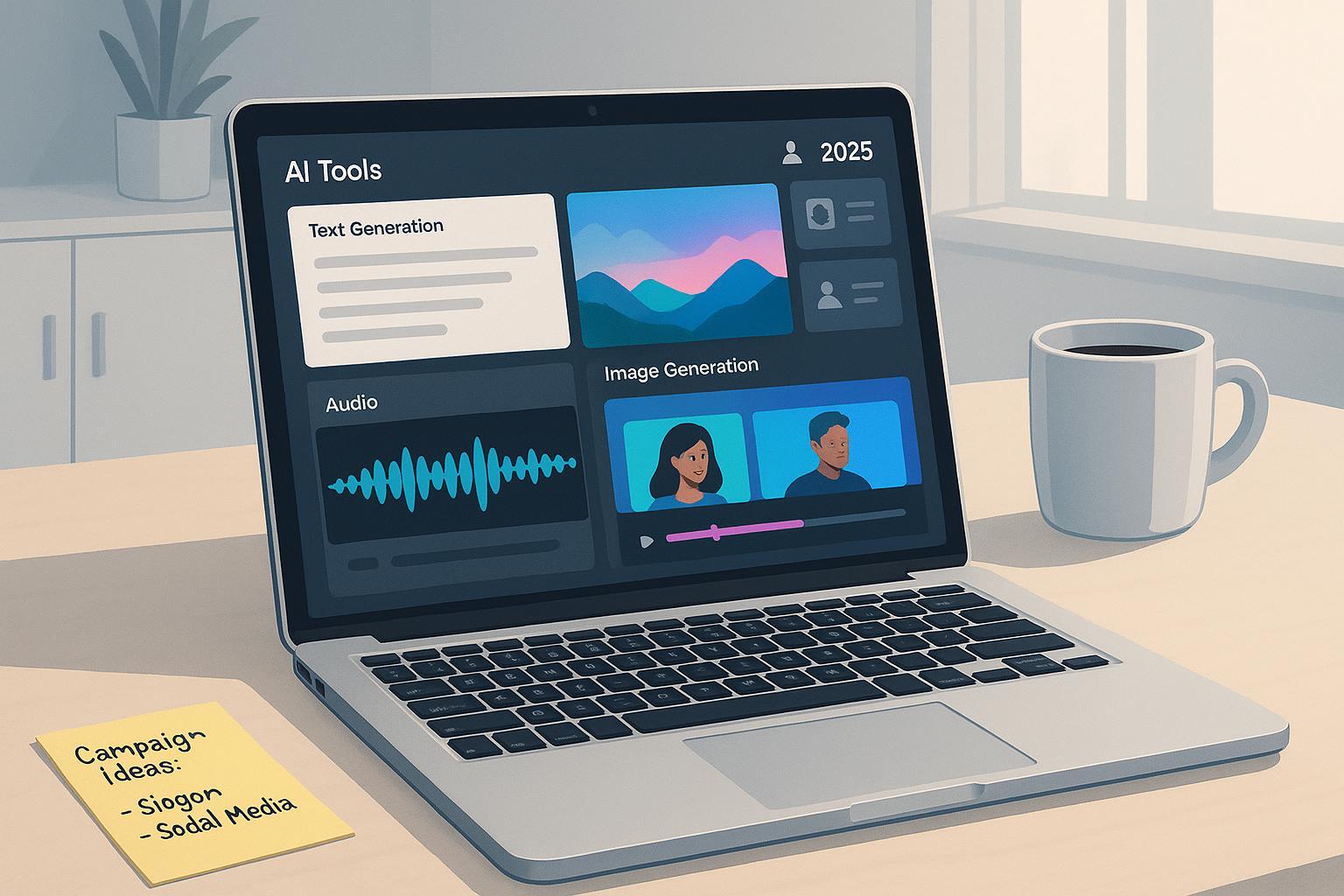
Marketing teams don’t just “write copy” anymore—they storyboard product videos, design social carousels, repurpose webinars into snackable shorts, localize captions, and ship everything fast without breaking brand voice. This guide curates proven multimodal AI tools (text, image/design, video, and audio) that help you do that at scale in 2025—without drowning in tabs or one-off hacks.
What you’ll get: a segmented shortlist by use case, clear pros/cons, who each tool is best for, and evidence-linked pricing notes (subject to change). Use this as a practical starting point to build your own stack.
How we chose (methodology)
We evaluated tools on:
- Capability match across modalities or strong specialty fit (25%)
- Brand governance (voice training, permissions, collaboration) (15%)
- Workflow fit and learning curve (templates, integrations) (15%)
- Evidence quality and recency (docs/release notes, reputable reviews) (15%)
- Value and pricing clarity (per-seat vs. per-output) (15%)
- Reliability/support and language coverage (15%)
Pricing callouts are “as of Oct 2025” and can change—confirm on each vendor’s pricing page before purchase.
Text-first suites (with multimodal add-ons)
1) Jasper — Brand voice-first content suite for teams
- Why it stands out: Jasper emphasizes governance (Brand Voice, knowledge assets) and campaign workflows from ideation through optimization.
- Notable capabilities:
- Train brand voice and centralize knowledge to keep outputs on-message
- Multi-agent workflows for multi-step projects (brief → draft → variants)
- SEO and collaboration features for content operations
- Pros: Strong marketing templates; governance-friendly; expanding integrations.
- Cons: Advanced features live on higher tiers; expect onboarding to set up voice/knowledge.
- Best for: Content teams that need on-brand copy across channels; mid-market/enterprise marketing ops.
- Not for: Solo creators seeking the absolute lowest price.
- Pricing: Creator/Pro tiers are commonly positioned for individuals and small teams; Business is custom. Verify inclusions and limits on Jasper’s official pages.
- Evidence: See the 2025 Jasper platform overview in the company’s materials: Jasper Platform — built for marketing success (Jasper, 2025).
2) Copy.ai — Workflow automation for research-to-copy
- Why it stands out: Offers research/enrichment automations plus chat-style generation; useful for briefs, outreach, and content variants.
- Notable capabilities:
- Brand voice and knowledge base-style “Infobase” for context
- Automation workflows for enrichment, outlines, and exports
- Chat interface for ad-hoc prompts and collaboration
- Pros: Good for operationalizing repeatable tasks; approachable UI.
- Cons: Automation depth varies by use case; watch plan limits.
- Best for: Performance marketers and content managers who want repeatable workflows.
- Not for: Teams requiring deep compliance/guardrails across a large org.
- Pricing: Free and paid tiers are available; limits and seats vary by plan. Check current plan details before purchase.
- Evidence: For plan tiers and typical inclusions, see the 2025 pricing snapshot on Capterra’s listing: Copy.ai pricing (Capterra, 2025). Always confirm on the vendor’s site.
3) Writer — Enterprise governance and compliance
- Why it stands out: Governance-first approach with granular permissions, brand/style guides, and enterprise deployment patterns.
- Notable capabilities:
- Centralized style guides and knowledge
- RBAC and enterprise controls; agent-style workflows
- Security/compliance focus for large organizations
- Pros: Strong fit for regulated industries and brand risk management.
- Cons: Best value realized with enterprise deployment; smaller teams may not need the overhead.
- Best for: Enterprise content ops; teams that prioritize permissions and compliance.
- Not for: Freelancers or very small teams seeking a lightweight editor.
- Pricing: Enterprise-led with evolving public plan options—verify directly with the vendor.
- Evidence: Overview and product positioning on Writer.com (Writer, 2025).
Video-first generators (from avatars to cinematic)
4) Synthesia — Scalable avatar-led explainer and training videos
- Why it stands out: Turn scripts into polished avatar videos; supports many languages for global rollouts.
- Notable capabilities:
- Large avatar catalog plus custom avatars
- Templates for training, onboarding, and product explainers
- Collaboration and translation workflows
- Pros: Fast to produce brand-consistent explainers; multilingual reach.
- Cons: Avatar look-and-feel isn’t for every brand; cinematic control is limited versus pro editors.
- Best for: L&D, onboarding, product tutorials, global training.
- Not for: Teams chasing high-end cinematic ads.
- Pricing: Offers free/entry tiers through enterprise; minutes and avatar availability vary by tier—confirm on the vendor site.
- Evidence: Feature scope summarized on the official page: Synthesia AI video generator (Synthesia, 2025).
5) HeyGen — Talking avatars, dubbing, and translation
- Why it stands out: Flexible talking-head videos with robust translation/dubbing for social and product comms.
- Notable capabilities:
- Talking avatars with motion controls and templates
- Video translation/dubbing across many languages
- Team collaboration and API options
- Pros: Easy pipeline for talking-heads and multilingual posts.
- Cons: Watch resolution and usage caps by plan; brand realism varies by avatar choice.
- Best for: Social/video marketers scaling spokesperson-style content.
- Not for: Long-form cinematic production.
- Pricing: Free and paid plans; common published ranges for Creator and Team tiers; always verify.
- Evidence: Current plan types and inclusions are outlined in HeyGen’s help center: HeyGen pricing plans explained (HeyGen Help, 2025).
6) Runway — Gen-4 text/image-to-video and smart editing
- Why it stands out: Advanced text/image-to-video with powerful editing (inpainting, motion tracking) for creative teams.
- Notable capabilities:
- Gen-4 model for controllable, higher-fidelity generations
- Video-to-video transformations and background removal
- Project collaboration and export workflows
- Pros: Strong creative controls versus simple avatar tools; plays well with pro workflows.
- Cons: Learning curve for best results; credits/tiers require planning.
- Best for: Content studios and performance teams needing bespoke motion assets.
- Not for: One-click office explainers.
- Pricing: Free and paid tiers with credit-based usage; access to the latest models varies by plan.
- Evidence: See the model overview and examples in Runway’s Gen-4 research introduction (Runway, 2025).
Image and design suites
7) Canva Magic Studio — Templates, brand kits, and AI media in one place
- Why it stands out: End-to-end design system with AI text-to-image/video, Brand Kit, and team collaboration.
- Notable capabilities:
- Magic Write, Magic Design, and Magic Media (text-to-image/video)
- Brand Kit and templates for consistent visual identity
- Collaborative editing and approvals
- Pros: Rapid campaign asset production; minimal learning curve.
- Cons: Advanced image/video control is limited versus specialist tools.
- Best for: Social and growth teams that value speed and consistency.
- Not for: Advanced art direction or cinematic video.
- Pricing: Pro and Teams plans with per-user pricing; AI credit consumption varies by task.
- Evidence: Current plan pricing is listed on Canva’s pricing page (Canva, 2025).
8) Adobe Firefly + Photoshop AI — Commercially safe generative for creatives
- Why it stands out: Deep integration across Creative Cloud with an emphasis on commercially safe training sources.
- Notable capabilities:
- Generative Fill/Expand in Photoshop; vector generation in Illustrator
- Firefly models and Boards; integration across CC apps
- Enterprise-grade workflows for creative teams
- Pros: Best-in-class editing paired with modern gen features; strong IP posture.
- Cons: Credit systems and plan differences can be confusing; pro tools have a learning curve.
- Best for: Design-led teams and agencies already in Adobe ecosystems.
- Not for: Casual users seeking quick social graphics.
- Pricing: Creative Cloud plans include monthly generative credits; Firefly subscriptions also available—check allowances and plan details.
- Evidence: Credit allowances and plan inclusion are detailed in Adobe’s Generative credits FAQ (Adobe Help, 2025).
9) Midjourney — High-quality image generation with style control
- Why it stands out: Exceptional aesthetic quality, brandable styles, and growing animation capabilities.
- Notable capabilities:
- Rich parameter control, upscaling, and style consistency
- Strong photorealism and illustrative range
- Early-stage video/animation features for motion exploration
- Pros: Top-tier visuals for campaigns, concepts, and moodboards.
- Cons: Power-user features require practice; separate tools may be needed for layout/typesetting.
- Best for: Designers and content leads who value standout visuals.
- Not for: Teams needing tight governance inside a broader suite.
- Pricing: Tiered subscriptions (e.g., Standard, Pro, Mega) with differing GPU hours and features; confirm on the official docs.
- Evidence: Plan features and tiers are documented in Midjourney plan information (Midjourney Docs, 2025).
Audio, voice, and repurposing
10) Descript — Text-based editing for podcasts and talking-head video
- Why it stands out: Edit audio/video by editing text; powerful for turning recordings into polished episodes or clips.
- Notable capabilities:
- Overdub voice cloning; Studio Sound cleanup; multitrack editing
- Screen/webcam recording; captions; AI-assisted cleanup (filler words, eye contact)
- Publishing workflows and team collaboration
- Pros: Dramatically shortens edit cycles; great for teams repurposing webinars.
- Cons: Heavy projects need machine resources; some advanced AI tools live on higher tiers.
- Best for: Content teams producing podcasts, video explainers, or webinar recaps.
- Not for: Cinematic editing or complex VFX workflows.
- Pricing: Free and paid tiers; transcription hours, export quality, and AI features vary by plan—verify before purchase.
11) ElevenLabs — Multilingual TTS, cloning, and dubbing
- Why it stands out: High-quality neural voices for narration, localization, and product videos.
- Notable capabilities:
- Custom voice cloning; multilingual TTS and dubbing
- Emotion/style control; studio UI and APIs
- Enterprise controls for security and scale
- Pros: Natural-sounding voices; helpful for global rollouts and accessibility.
- Cons: Credit accounting and model options require planning; guardrails needed for governance.
- Best for: Marketers localizing video scripts and creating consistent brand voices.
- Not for: Teams that never publish audio-led content.
- Pricing: Free-to-enterprise tiers; API usage is credit-based—confirm current allowances on the vendor’s pricing pages.
Multimodal model platform
12) OpenAI — GPT-4o for text, images, and real-time voice
- Why it stands out: Native multimodality (text, image, audio; real-time voice) with growing workspace features for collaboration.
- Notable capabilities:
- Real-time voice, file analysis, tools, and memory (in paid ChatGPT plans)
- API access for integrating multimodal AI into your own apps
- Broad ecosystem of templates and connectors
- Pros: Versatile engine to power many parts of your stack.
- Cons: Token/credit complexity; governance depends on how you deploy it.
- Best for: Teams building custom workflows or augmenting existing tools.
- Not for: Anyone who wants a fully packaged, out-of-the-box content suite.
- Pricing: ChatGPT subscriptions for individuals/teams and usage-based API pricing—confirm current rates on OpenAI’s official pages.
- Evidence: Current plan details are tracked on OpenAI’s ChatGPT pricing page (OpenAI, 2025).
How to choose (and stack these tools without chaos)
- Start with your “center of gravity.” If your team ships a lot of explainers and onboarding content, prioritize a video-first generator (Synthesia or HeyGen) and pair it with a script/outline workflow in a text-first suite (Jasper/Copy.ai). If you ship dozens of social graphics weekly, anchor on Canva or Adobe.
- Map governance early. Decide where brand voice, terminology, and approvals live. Suites like Writer and Jasper help centralize voice and knowledge. If you lean on model platforms (e.g., OpenAI), document prompt guidelines and approval workflows.
- Watch plan limits and credits. Video minutes, avatar access, generative credits, and GPU hours can reshape ROI. Canva and Adobe use credit-like systems for certain tasks; avatar/video platforms meter minutes. Model APIs meter tokens.
- Localize with purpose. Pair a video generator with a voice solution for global distribution. For instance, create the base video in Synthesia, then translate/dub with a voice tool like ElevenLabs, and finalize captions in Descript.
- Build a repurposing lane. Record a webinar, slice it into shorts (Descript), add captions and B‑roll, then design thumbnails and carousels in Canva. Keep naming conventions, aspect ratios, and brand guardrails consistent.
- Monitor how your content shows up in AI answers. Beyond traditional SEO, AI Overviews and chat-style engines increasingly cite and summarize brand content. Learn the basics of Generative Engine Optimization (GEO) to understand how your assets surface in AI results.
Quick comparison by “best for”
- Brand voice and governance: Writer, Jasper
- Workflow automation for copy variants: Copy.ai
- Fast explainers and training: Synthesia, HeyGen
- Advanced motion and effects: Runway
- Speedy social design at scale: Canva
- Pro-grade compositing/editing with gen assist: Adobe Firefly + Photoshop AI
- Standout visuals and brandable styles: Midjourney
- Repurposing podcasts/webinars into clips: Descript
- Multilingual dubbing and consistent narration: ElevenLabs
- Custom multimodal workflows and apps: OpenAI (GPT-4o)
Pricing and plan gotchas to check (before you buy)
- Minutes and credits: Video tools meter output minutes; design suites meter generative credits. Confirm the exact allowances and overage pricing.
- Team vs. individual plans: Collaboration, brand kits, and admin controls often sit behind team/enterprise tiers.
- Commercial usage rights: Ensure your plan covers commercial use for generated media (especially images/voices).
- Language/locale support: If you operate globally, verify languages for TTS, dubbing, and captions.
- Data governance: For regulated industries, map where data is stored/processed and who can access outputs.
Source snapshots for key claims
To keep this guide scannable, we limited external links. Here are the canonical references for several critical claims; double-check current pages before purchasing:
- Jasper capabilities (brand voice, workflows): Jasper Platform — Jasper, 2025
- Synthesia features and use cases: AI video generator — Synthesia, 2025
- HeyGen plan types and inclusions: Pricing plans explained — HeyGen Help, 2025
- Runway model overview and examples: Introducing Gen-4 — Runway, 2025
- Canva plan pricing: Canva pricing — Canva, 2025
- Adobe plan inclusions and credits: Generative credits FAQ — Adobe Help, 2025
- Midjourney tier features: Plan Information — Midjourney Docs, 2025
- OpenAI plan overview: ChatGPT pricing — OpenAI, 2025
- Writer platform positioning: Writer.com — Writer, 2025
- Copy.ai pricing snapshot: Copy.ai on Capterra — Capterra, 2025
Note: Each vendor frequently updates features and pricing; treat the above as starting points and confirm details directly.
Next steps
- Pilot one tool per modality first. For example, pair Jasper (text), Synthesia (video), Canva (design), and Descript (repurposing). Prove ROI on a single campaign, then expand.
- Codify prompts, templates, and review checklists. Great tools don’t fix inconsistent inputs.
- Monitor how your content performs in AI answer engines (ChatGPT, Perplexity, Google AI Overviews) and iterate content accordingly. Consider using Geneo to track answer-engine visibility and sentiment across platforms. Disclosure: Geneo is our product.
If you need a deeper dive into how AI answers source and cite content, start with this primer on Generative Engine Optimization (GEO).


